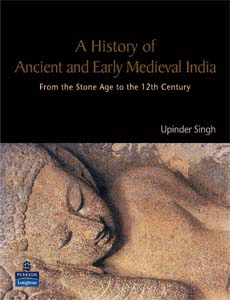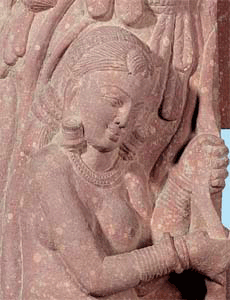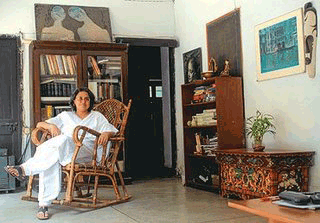A History of Ancient and Early Medieval India :
From the Stone Age to the 12th Century
 About the Book :
About the Book :
A History of Ancient and Early Medieval India : From the Stone Age to the 12th Century
Developed as the most comprehensive book yet for students and general readers ‘A History of Ancient and Early Medieval India’ offers an exhaustive overview of the subject. Dividing this vast historical expanse into broad chronological units, it constructs profiles of the various geographical regions of the sub-continent, weaving together and analysing an unparalleled range of literary and archaeological sources. Prehistory and proto-history are dealt within considerable detail.
The narrative of the historical period breaks away from conventional text based history writing, providing a window into the world of the primary sources of history. Substantial archaeological data is incorporated along with literary, epigraphy, and numismatic evidence. It is balanced assessment encouraging readers to independently evaluate theories, evidences, and arguments.
Lavishly illustrated with over four hundred photographs, maps and sketches ‘A History of Ancient and Early Medieval India’ helps the reader visualize and understand the extraordinary rich and varied remains of the Indian subcontinent’s ancient past.

– Introduction : Ideas of the Early Indian Past
– 1. Understanding Literary and Archaeological Sources
– 2. Hunter-Gatherers of the Palaeolithic and Mesolithic Ages
– 3. The Transition of Food Production : Neolithic, Neolithic-Chalcolithic, and Chalcolithic Villages, c 7000-2000 BCE
– 4. The Harappan Civilization, c. 2600-1900 BCE
– 5. Cultural Transitions : Images from Texts and Archaeology, C. 2000 – 600 BCE
– 6. Cities, Kings and Renunciants : North India, c. 600-300 BCE
– 7. Power and Piety : the Maurya Empire, c. 324-187 BCE
– 8. Interaction and Innovation, c. 200 BCE – 300 CE
– 9. Aesthetics and Empire, c. 300 – 600 CE
– 10. Emerging Regional Configurations, c 600-1200 CE
– Glossary / Index
Book Details
– Author: Upinder Singh
– Year: 2008
– ISBN : 9788131711200 / 813171120X
– Hardcover, 28 cm., pp. 675, with over 400 col. & b/w ills.
– An other article from the author : Religions beyond ‘isms’
UPINDER SINGH
The Prime Minister’s daughter
Upendra Singh teaches ancient history at St Stephens College, Delhi. She is the author of Kings, Brahmanas and Temples in Orissa: An Epigraphic Study, AD 300-1147 (1994); Ancient Delhi (1999); and a book for children, Mystereis of the Past: Archaeological Sites in India (2002). Her scholarly articles have appeared in World Archaeology, The Indian Economic and Social History Review, The Indian Historical Review, Man and Environment, and South Asian Studies.

In Outlook, Sheela Reddy profiles Prime Minister Manmohan Singh’s daughter Upinder Singh:
“You can’t miss it,” says historian Upinder Singh rather apologetically, giving directions to her home in the St Stephen’s staff quarters. “It looks like a fortress.” It does: a towering blank metal gate, of which a chocolate square pops open at the first knock to reveal the head of a grim securityman.
And there’s a whole posse of Black Cats behind the gate, befitting the home of Prime Minister Manmohan Singh’s daughter. But inside, it’s a different world: cane chairs, cement floors and peeling white walls. The shabby-genteel world of two university dons who, between them, share most of the housework-there’s a part-time cook, Neena, to whom Upinder wants to dedicate her next book and “the boys help a little but not as much as I’d like them to”.
And between them, they have also probably read all the books lining their walls, where plaster casts of Socrates rub shoulders with Harappan dancing girls. In fact, half-a-dozen of these books have been written by Upinder herself.




